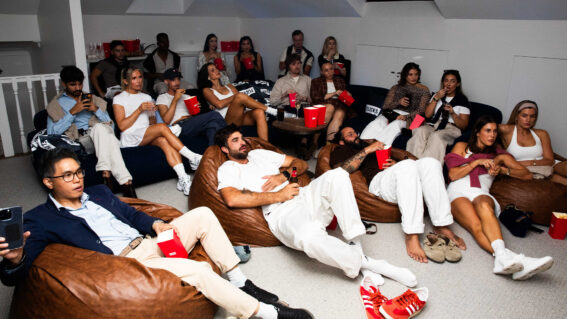5 Ways Doctor Strange Changed Up The Marvel Cinematic Universe
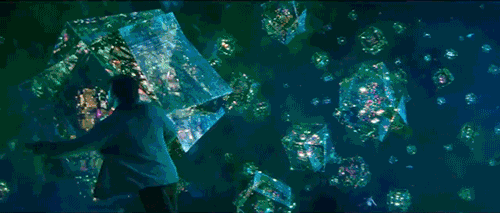
Scott Derrickson’s Doctor Strange arrived at a time when audiences were perhaps starting to get a little complacent about the Marvel Cinematic Universe and its seemingly endless bounty of big screen successes. Marvel definitely wasn’t, however, and although the film lacked the thunderous impact of some of their more high profile properties, it proved to be a devilishly entertaining delight filled with unexpected pleasures.
It also ramped things up in the MCU in ways that may not have been instantly obvious, but which will become more apparent going forward. With the film available to stream on NEON and the character making an appearance in Thor: Ragnarok this week, Dominic Corry cites five ways in which Doctor Strange changed up the Marvel Cinematic Universe.
1. The Multiverse

Anyone who’s spent any time at all reading Marvel Comics knows that parallel dimensions have long played a HUGE role in every single character’s story. It’s probably the largest aspect of the (printed) Marvel Universe that has yet to play out in any real way in the movies. Doctor Strange introduced and explored the concept both as a way of explaining the magical forces being exploited, and through its (ultimate) antagonist, the inter-dimensional meanie Dormammu. Dormammu exists outside “our” dimension, a designation that applies to an alarming number of evil doers in the broader Marvel Universe.
As the MCU nears the climax of Phase Three, rumours persist about some kind of wide reset, something that would almost certainly involve parallel dimensions. The comics have long reveled in the storytelling possibilities that come with superheroes encountering versions of themselves from other dimensions, it’s only a matter of time until this happens in the MCU.
2. Spell-casting
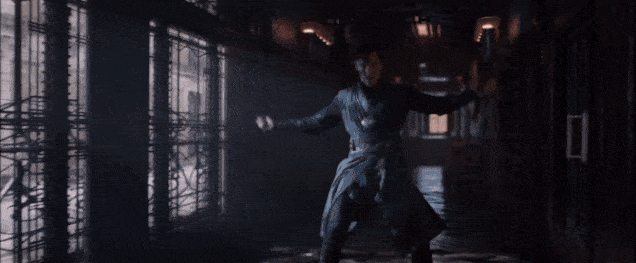
Before Doctor Strange, big screen Marvel superheroes mostly got the job done by shooting, punching or smashing whoever got in their way. Sometimes kicking was involved. Doctor Strange upended up the prevailing standards of superhero hand-to-hand combat by having its characters wave their actual hands to create ephemeral glowing devices for magical duels. And it looks freaking cool.
Beyond introducing the very concept of magic into the MCU, Doctor Strange also stands as the first film to make hand-waving spell-casting visually compelling on screen. Heck, it’s the first film to make it not seem ridiculous. Sorry, Warcraft.
The most delightful aspect of this is the portal-creating ‘Sling Ring’, which manages to seem both totally bad-ass and something you’d buy after school from a dairy and then lick.
3. Action

Marvel Studios has always been very creative with the action scenes in its movies, mostly managing to bring something fresh with every film. But a new standard was set for action set-piece creativity in Doctor Strange. The insanely awesome “mirror dimension” chases and fights featuring buildings and streets folding in themselves in a kaleidoscopic fashion evoked the work of famed artist M.C. Escher, which is not something that is often said about action scenes.
These trippy (a word featured in 97% of Doctor Strange reviews – FACT) action scenes arguably built on the promise of the action that Christopher Nolan began to explore in Inception. Or at least the action that the Inception marketing suggested, but then (whisper it) failed to deliver on.
4. Influence of the Silver Age
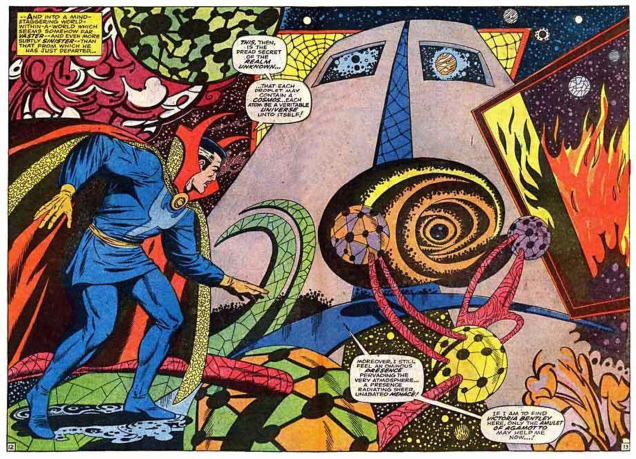
Jack Kirby is a name that is being bandied about a lot in the publicity surrounding Taika Waititi’s Thor: Ragnarok, and Waititi himself has repeatedly cited the master comic book creator as a major inspiration for his film. But it’s important to note that Doctor Strange featured plenty of fellow Marvel artistic legend Steve Ditko (co-creator of Dr. Strange and also Spider-Man) in its inter-dimensional cosmic vistas and mind-bending fantasy sequences.
The two Hall of Famers’ talents in these (and other) areas helped to define The Silver Age of Comic Books. While the movies are only really just getting around to working out how to translate their influential historical aesthetics into live action, Doctor Strange got the ball rolling.
5. The Cape (Cough, Cloak)
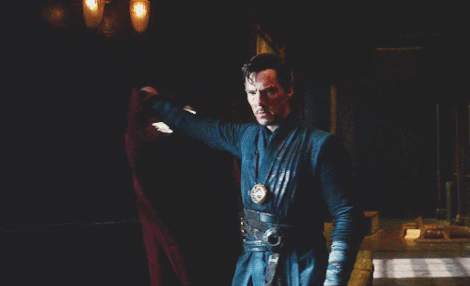
This seemingly sentient item of clothing is not the first cape in MCU, but it’s definitely the best, and also one of the funniest characters in the movie. There’s something about the way it swirls onscreen that beneficially evokes the early days of Todd McFarlane’s Spawn comic book, (and to a lesser degree, the 1997 Spawn movie – watch the trailer).
As The Incredibles so memorably articulated, the cape is the most ridiculous of all superhero affectations, but Doctor Strange managed to make it one of the most charming aspects of the film.
UPDATE: We have been fact-checked. By the director. Sheesh:

Honourable Mention: The Name

In Benedict Cumberbatch, there’s finally an actor in the MCU whose actual name is more ridiculous and made-up sounding than that of his character.
I like it.
I guess they ran out of guys named Chris.
Want more? Read our interviews with Doctor Strange director Scott Derrickson and co-star Tilda Swinton – who we found out loves the expression “metric fuck-ton”.
Doctor Strange is available to stream on NEON. This lovely piece of content is brought to you by NEON. If you’re not on NZ’s best streaming service already, click here to sign up to their TV & Movies package now.















